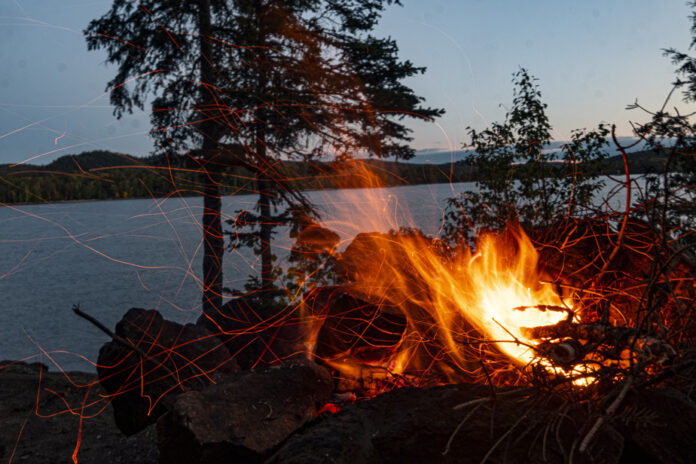The Society of Outdoor Establishments of Quebec (SEPAQ) is currently documenting the consequences of campfires on the health of customers, and does not rule out issuing warnings.
A study carried out at Yamaska National Park in the summer of 2009 measured average concentrations of fine particles well above the threshold at which air quality is considered “poor”. However, the health effects were not mentioned in the SEPAQ bulletin that relayed this study, denounced a user of Mont-Tremblant National Park, Daniel Vézina, who had sent La Presse documents obtained by requests access to information.
The smoke from campfires during a camping trip last September had seriously inconvenienced Mr. Vézina’s children, and seemed to aggravate their asthma, he said. The father, who does not suffer from asthma, had nevertheless felt “a burning in the throat, tingling in the eyes, headaches”.
This testimony made SEPAQ think.
“This led us to want to better document the situation according to the specific characteristics of the establishments, the weather conditions, the busiest periods and the tools that could be put in place,” said SEPAQ spokesperson Simon Boivin. , via email this week.
“SEPAQ will assess the relevance of adding its voice to the various prevention organizations which remind people with respiratory problems in particular to take into consideration the impacts of campfires during their stays in the open air”, writes Ms. . Boivin, without giving a date. “Elements could be put in place over the next few months. »
The exploratory study conducted at Yamaska National Park was conducted over four days, between July 28 and August 5, the busiest time of the year in this 140-seat campsite.
As of 9 p.m., up to 64 campfires were in operation. And on some evenings, peak concentrations “exceeded by a factor [of] 2.5 the three-hour average concentration at which air quality is categorized as ‘poor,'” said a paper co-authored by officials. what was then called the Ministry of Sustainable Development, Environment and Parks (MDDEP) and SEPAQ.
People with respiratory conditions, such as asthma and chronic obstructive pulmonary disease (COPD), “could actually be bothered by smoke from the fires,” notes Audrey Smargiassi, a professor in the University’s School of Public Health. of Montreal and associate researcher at the National Institute of Public Health of Quebec (INSPQ).
“Each person is supposed to know a little about how to manage their symptoms. If someone is asthmatic and is allergic to cats, they are not going to enter a house where there are cats, it is obvious,” said Ms. Smargiassi, pointing out that the INSPQ does not have the mandate to decide on what SEPAQ should do.
The SEPAQ website “already educates campers about responsible and respectful campfires,” Boivin notes. In particular, they are advised to keep their fire “as small as possible in order to minimize the fumes”, but nothing mentions the health risks.
The City of Longueuil is also wondering about the supervision of outdoor fires, and indoor fireplaces, on its territory. The Office de participation publique de Longueuil (OPPL) held public consultations in March, and plans to submit its report to the mayor and the chair of the executive committee in mid-June. OPPL will publish it on its website 15 days later.
A municipal by-law that came into effect in April 2021 had banned outdoor fires in woods throughout the territory of Longueuil. A subsequent regulation, adopted in December 2021, however, allowed these fires in the boroughs of Greenfield Park and Saint-Hubert, where the ban had caused a stir. The OPPL then received the mandate, last November, to hold broader consultations.
Outdoor wood fireplaces have already been banned in several cities, including Montreal, Brossard, Boucherville and Saint-Bruno-de-Montarville, reports the OPPL in its consultation document.


















